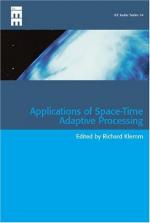|
This section contains 1,024 words (approx. 4 pages at 300 words per page) |

|
For the last century, much of the world's scientific research has been conducted at the request of governments, and most often under the supervision of the military. The technological advances resulting from such research--from the development of the computer chip to the invention of flame-retardant fabrics--have affected nearly every sector of society. During the 1930s one such government-sponsored project was Britain's top-secret study of radio detection and ranging, now familiarly abbreviated as radar.
The properties of radio waves had been studied for many years before the idea of radio ranging emerged. In 1904, Christian Hullsmeyer, a German engineer, used radio waves in his telomobiloskop, a crude radar device. The telomobiloskop was invented to prevent collisions between ships. In 1922 Italian physicist Guglielmo Marconi noted that metallic objects reflect these waves, and in 1924 English physicist Edward Appleton (1892-1965) and Miles Barnett used radio signals to find the "mirror in the sky...
|
This section contains 1,024 words (approx. 4 pages at 300 words per page) |

|


